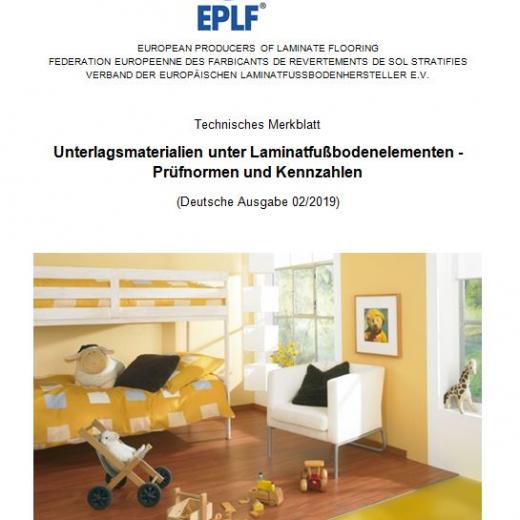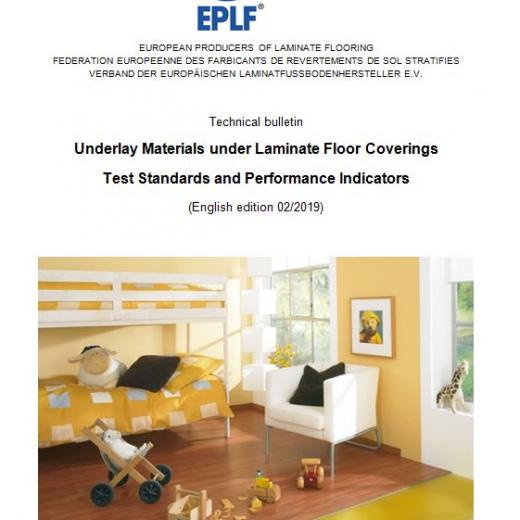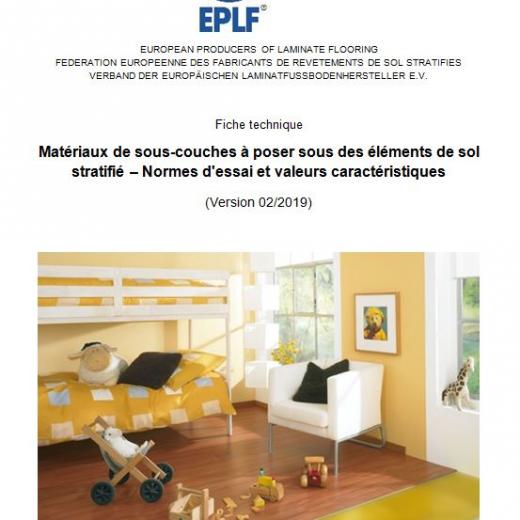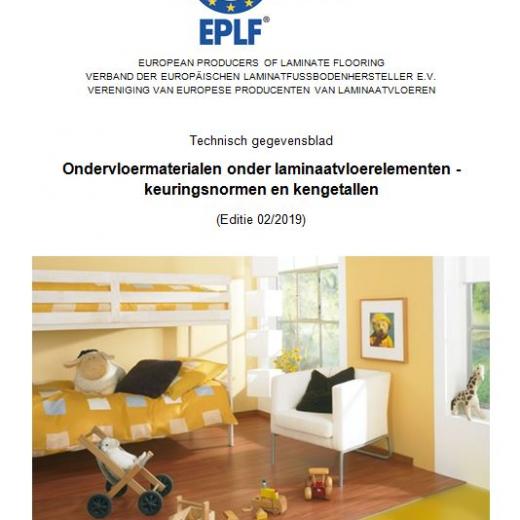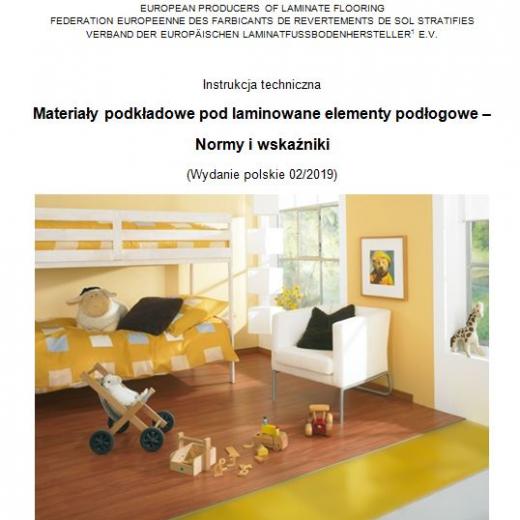EPLF technical bulletin “Underlay Materials” now updated - How to choose the right underlay for a laminate floor
26 February 2019
Following the publication of European standard EN 16354, the EPLF has updated its technical bulletin “Underlay Materials under Laminate Floor Coverings – Test Standards and Performance Indicators”. This document gives information and advice on choosing the right underlay for laminate flooring used in a variety of applications. The new bulletin can be downloaded as a PDF file free of charge from the Association’s website www.eplf.com. Language versions currently available are German and English, with the following to be added soon: French, Dutch and Polish.
What are the key issues to consider when installing laminate over underfloor heating or cooling? What properties must an underlay have in order to withstand different loadings such as heavy furniture, office chairs rolling on castors or impact from dropped items? What is the minimum level of impact sound reduction that an underlay should provide? This information can be found in the EPLF bulletin and is required by producers, suppliers, building planners, craft trades, retailers, and consumers wishing to make an informed choice. The design aim is always for the individual components of the overall laminate floor system to work together so as to maximise comfort and safety in use.
In general terms, the entire flooring system, i.e. the combination of laminate flooring and underlay, should match the user’s requirements, whether in a domestic or a commercial setting. The structural conditions, the existing sub-floor construction, the demands on the floor and the acoustic requirements all play a role here.
The bulletin shows the common labelling symbols used, explains the meaning of the technical abbreviations and lists the technical indicators which can be used to assess the performance and durability of an underlay. The result is clear criteria for choosing the appropriate underlay materials to be laid under floating laminate floors. Specific recommendations are given in each case using minimum values as well as values for increased demands. Rules of thumb with correlated statements highlighted in colour give practical guidance for making an assessment.
Properties re-evaluated
In the past, values such as density and thickness tended to be subject to generalisation when assessing quality: for example ‘High density = Good mechanical properties’ or ‘Greater thickness = Good impact sound behaviour’. However, more recent findings show that this does not always apply. For example, an underlay made from Material A with lower density may be considerably more pressure-resistant than Material B which has greater density.
In most cases, the thicker the underlay, the softer it is. However, severe deformations can cause irreparable damage to the click system or the HDF core board of the laminate planks. The capacity of an underlay to support the connection system is expressed by means of the CS value (Compressive Strength). The higher the CS value, the better the underlay will protect the joining system and counteract gaps forming and joints opening up. A minimum CS value of 10 kPa provides sufficient mechanical stability for laminate flooring; for higher demands it should be at least 60 kPa.
In contrast with impact sound, which is the perception of noise from the floor in rooms situated either adjacent or below it, walking noise refers to the sound that can be heard in the room itself when a floor covering is used and walked on. Based on EN 16205, a test procedure has been developed specifically for laminate floor coverings whereby the “perceived loudness” of a floor covering can be expressed by an RWS value (Radiated Walking Sound). The lower the RWS value of an underlay, the greater the reduction in the perceived walking sound in the room.
EN 16354 take aspects like these into consideration by specifying a range of appropriate test methods, and the EPLF bulletin describes the underlay requirements resulting from these. Annexed to the document is a table showing a clear summary of the requirements for underlays. This allows for the correct choice of underlay in order to optimise a laminate flooring system and lengthen its lifespan.
www.eplf.com
Image
Image caption
elnd1903_b1: New 2019 edition: The EPLF provides free-of-charge information in its compact bulletin “Underlay Materials under Laminate Floor Coverings – Test Standards and Performance Indicators” – Photo: EPLF
- en elne_1903_pr.docx 91 KB
- en tb_-_eplf_underlay_materials_under_laminate_floor_coverings_2019-02_en_.pdf 234 KB
- de elnd_1903_pr.docx 94 KB
- de tm_-_eplf_unterlagsmaterialien_unter_laminatfussboeden_2019-02_de_.pdf 245 KB
- es tb_-_eplf_underlay_materials_under_laminate_floor_coverings_2019-02_en.pdf 358 KB
- es elns_1903_pr.docx 92 KB
- fr elnf_1903_pr.docx 93 KB
- it elni_1903_pr.docx 92 KB
- nl elnn1903_pr.doc 92 KB
- pl elnp_1903_pr.docx 92 KB
- ru elnr_1903_pr.docx 93 KB
- tr elnt_1903_pr.docx 92 KB
Contact for press enquiries
Anne-Claude Martin
Press Officer
press(at)eplf.com
Rue Defacqz 52
B - 1050 Ixelles
Phone +32 2 788 31 68
